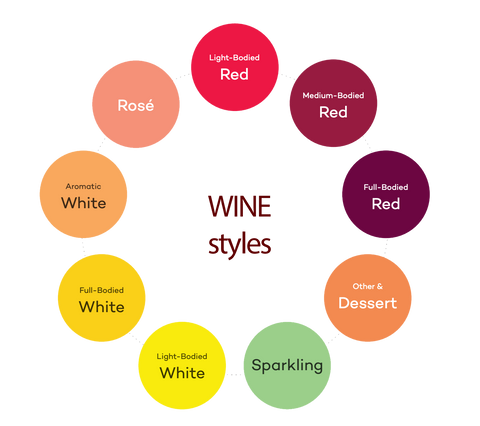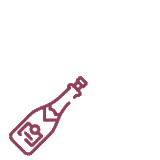The Wine Guide from Grape and Bean
Welcome to The Wine Guide from Grape and Bean. We sell real wine made by real families. Our wines are made in small batches, are organic, biodynamic and low in sulphites. This means they taste great. We are obsessed with wine and believe that great tasting wine should be available to all. But what does great wine taste like? With so many great wines on the market, it is our mission to help find you the perfect wine for any occasion. Bringing it down to its core, there are 9 wine styles and everything stems from these.

WHAT IS VINTAGE WINE?
Once a year, grapes are harvested to make wine. This is where we get the term “vintage.” Each vintage is characterised by unique growing conditions (rainfall, wind, frost, hail, fires, etc) that ultimately affect how the wine tastes. This is why you’ll find some vintages preferable to others. The grape also affects the taste. Wine grapes are smaller, sweeter, have thicker skins, and contain seeds. These attributes give wine its unique taste. Click the telephone to talk to our resident wine expert, Tony, or dial 057 8656178.
 |
 |
 |
 |
| Light bodied Red Wine | Light-bodied red wines are typified by their translucent color, light tannin, increased acidity, and delicate, floral herbal aromas. Light-bodied red wines are very versatile food wines – they make a perfect partner with poultry. |
| Medium Bodied Red Wine | Not too light nor too heavy, this is the “baby bear” red wine style. There are a wide array of choices (and thus, flavous) in this red wine category. Tannin is moderate, and expect most to have slightly higher acidity. The aforementioned traits make for a wine that can pair with most foods (but avoid super delicate dishes.) Additionally, many of these wines have the structure to age well. |
| Full Bodied Red Wine | Full-bodied red wines are the deepest, darkest, and highest in tannin of the red wines. Despite what you might have heard about it, tannin is what gives wine antioxidant properties. Additionally, it ensures many of these wines will age for decades. Bold red wine pairs well with fatty foods because of their high tannin. |
| Dessert Wine | In the 19th century, sweet wines were more popular than dry wines. Several of the most exalted wines in the world, from Sauternes in Bordeaux to Tokaji Aszú from Hungary, will age just as long as bold red wines (or longer). The dessert wine style is a catchall for some of the more rare wines of the world. Each is made with a unique method and range from dry to sweet. |
| Sparkling Wine | Sparkling wines are characterised by carbonation caused from a second fermentation. This gives bubbly wines distinct yeasty and bready aromas. Sparkling wines come in all styles (white, rosé, and red) and sweetness levels. The label terms “Brut,” “Extra Brut,” and “Brut Nature” are the most dry. |
| Light Bodied White Wine | Light-bodied, easy-drinking dry white wines are some of the most-sold wines in the world. Light whites have increased acidity and thus, pair with a wide array of cuisines. Aromas range from sweeter stone fruits to savory, herby, and peppery flavours. |
| Full Bodied White Wine | Full-bodied white wines are great wines for red wine lovers because of their rich smooth taste and subtle creamy notes. What makes white wines so rich? Aging white wines in oak barrels causes several interactions to occur that increase body. |
| Aromatic White Wine | Aromatic grapes include some of oldest wine varieties in the world. In fact, Cleopatra was noted to love Muscat of Alexandria–a rich, aromatic sweet wine from Greece. Expect explosive, perfumed aromas that spring out of the glass. Aromatic whites are available in dry or sweet styles, but often taste a touch sweet because of their sweet aromas. |
| Rose Wine | Rosé is made by “dyeing” the wine for a short time with red grape skins. Rosé first became popular in the late 1700’s when French Bordeaux wines imported to England had a pale colour and were called Claret. Nearly any red grape can be made into rosé. Also, it’s possible to blend in white wines to add acidity and complexity. The world’s largest rosé region is Provence, France. |
Don't forget to keep an eye on our coffee page. We are getting ready to launch a really smooth delicious hand roasted coffee product range.



